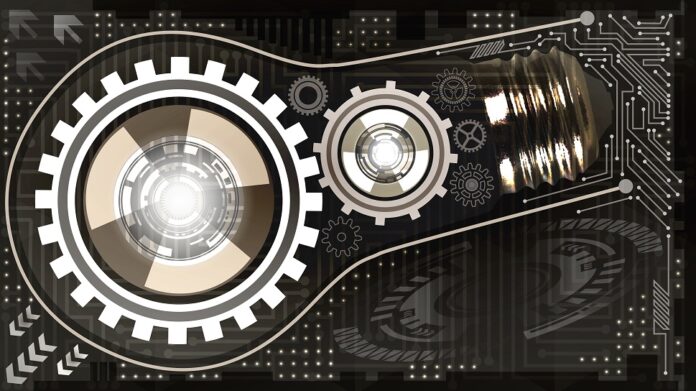Competitors are no longer recognizable. New strategies are required. The game has changed. Today’s rules might not apply tomorrow. Learn from blockchain-based healthcare companies that are redefining the rules.
Game theory is the science of strategy. A branch of mathematics and economics that explores strategic situations across multiple stakeholders with different goals, whose actions can affect one another. Pioneering companies are changing the game with blockchain technologies. The new game of consumer interactions redefines transparency, immutability and security across industries.
New game with new players
Much progress has been made with game theory. John von Neumann and Oskar Morgenstern’s 1944 book Game Theory and Economic Behavior outlined classic game theory. Franklin D. Roosevelt stated that “competition has been shown to be useful up to a certain point and no further, but cooperation, which is the thing we must strive for today, begins where competition leaves off.” Game theory analyzes strategic interaction and can be applied to economics, political science and military science. In game theory, players (decision-makers) adopt strategies (complete plans of action) and receive payoffs (rewards or punishments), all of which depend on the strategies of all of the players. A strategy is a complete plan that describes the action a player will take in every circumstance that is observed.
There are many common examples of game theory that include elections, auctions, wars, the arms race, oligopolies (when a small number of companies dominate a market), certain aspects of animal behavior, the evolution of social norms and, of course, games such as the ones played for entertainment, like Pokémon GO.
If you have played the board games Monopoly, Risk or Stratego, you knew who you were playing the game against. Today, players are less obvious. Likewise, partners you wouldn’t consider yesterday might be your best avenue for a competitive advantage. Change the rules with three of the leaders in blockchain technology.
Bron.tech (Sydney, Australia)
Problem Solved: Proving identity requires sharing too much identifiable information.
Why play today’s game with yesterday’s identity solutions? Bron.tech is revolutionizing identity. The bold vision of a personally controlled digital identity platform to encompass the legal, social and psychological aspect of one’s identity. Bron.tech has three flagship interaction offerings.
- OWLEE is a distributed application (dapp) reputation system providing instantaneous verification, identity management and interoperability for education providers, organizations and professionals.
- Blockchain Digital ID, Bron.tech’s ID platform is the solution for issuance, verification and use of digital identities by leveraging cryptography and storing transaction proofs on a public or private immutable ledger (blockchain). Using multiparty computation enabled by the blockchain to share an identity.
- Cyph.MD is a healthcare data-sharing platform. It leverages asymmetric cryptography with a hierarchical certificate system whereby every healthcare provider can issue identity tokens to its practitioners — to securely communicate and share data across the entire healthcare network.
Gem (California, United States)
Problem Solved: Personalized care is compromised without the privacy and security of the universal infrastructure.
Concerned about the hidden cost of trust over truth? Gem fuels automation with integrity, and helps to create data, identity and logic frameworks that allow companies to share data with industries by customizing participation within a blockchain network — cross-industry applications are connecting customers to products, services and interactions. Gem offers three integrity solutions:
- Distributed Resource Registries to define resources managed within a blockchain.
- Multiparty Identity and Access Management to control access to provisioned resources for key management, e.g. manufacturing or IoT and healthcare medical records.
- Logic Automation using rules to streamline data interactions across companies.
IBM Blockchain on Bluemix (New York, United States)
Problem Solved: People don’t own their data.
Attempting to secure digital assets? IBM Blockchain on Bluemix digitizes transaction workflow and secures digital assets within a private virtualized environment. IBM Blockchain allows companies to manage, develop and test blockchain network technology using flexible platforms and infrastructure offerings to manage blockchain networks. The core principles make up the IBM blockchain approach: community (donated over 44,000 lines of code to the Hyperledger Project), cloud (value-based services such as high-availability, compliance and security) and client (capabilities with the building, piloting and implementing).
- IBM Blockchain on Bluemix enables enterprise blockchain solutions at scale.
- Hyperledger Project facilitates open-source, openly governed, cross-industry-enabled blockchain technology.
- Docker Hub is designed to help companies deploy and support distributed applications throughout the entire life cycle.
Who’s playing the game?
The application of game theory in business centers on the interactions of multiple players. Everyone understands games. Competitive pricing to labor negotiations provides similar structures to analyze possible strategies and recommend and optimal strategy for each player. Adam Brandenburger and Barry Nalebuff in a Harvard Business Review article explained how game theory shapes strategy. Whether a high-stakes game or no stakes at all, every game has five elements.
- Players (who’s involved).
- Added values (unique value of each player).
- Rules (structure).
- Tactics (how players move to shape how other players move).
- Scope (game boundaries).
As 2016 closes and 2017 opens, pause to reflect on the game your company is playing and the players at the table — the game might have changed, and you might not notice all the players. Explore partnerships to redefine the rules and create a new game — be the player in the game others don’t notice.
